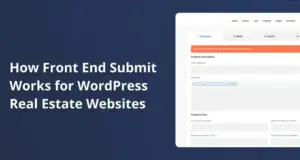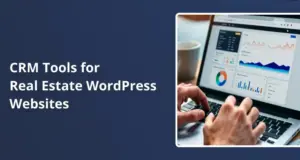In the dynamic world of real estate, timing is everything. Imagine a potential client browsing your website on their phone, eagerly exploring properties, and suddenly, the page just won’t load. They blink, and poof! They’re gone, never to return. Ouch! Optimizing the speed of your real estate WordPress website is not just a technicality; it’s a necessity for success. Welcome to my journey as I discovered how site speed directly impacts user experience, search engine ranking, and revenue.
1. Understanding the Importance of Site Speed
It’s not just about making your site look good; it’s about ensuring your content is delivered quickly and efficiently. Google has used site speed as a ranking signal for desktop searches since 2010 and for mobile searches since 2018. Think about it. Would you want to stay on a website that takes ages to load? Probably not. Neither will your potential clients.
A Google study indicates that as page load time increases, the bounce rate escalates. For instance, if your site takes longer than three seconds to load, users are likely to leave. It’s a harsh reality, but if your website doesn’t load quickly, you’re losing clients before they even see your beautiful listings.
Actionable Insights:
- Regularly monitor your site’s speed using tools like Google PageSpeed Insights or GTMetrix.
- Aim for a loading time under three seconds to retain visitors.
2. Initial Benchmarking
Before diving into optimization, it’s important to understand where you’re starting. We built a new affiliate site using the WP Astra Theme, and here are the benchmark results:
- PageSpeed Insights: Mobile score of 45, Desktop score of 79.
- Pingdom: Load time of 1.72 seconds, Page size of 1.7 MB.
- GTMetrix: Fully loaded in 4.3 seconds.
Now, let’s talk about how to apply these insights to your site. The first step is to use the mentioned tools to record current performance metrics. Identify specific areas that require improvement, such as load time, page size, and the number of requests. This data will be your roadmap to a faster, more efficient website.
3. Switching DNS Providers
One of the first steps in optimizing site speed is changing your DNS provider. I recommend switching to Cloudflare’s free DNS service. Why Cloudflare? It’s simple—faster DNS response times. Our site saw a 0.3-second improvement in load time just by switching to Cloudflare. That’s significant!
Setup Instructions:
- Sign up for a Cloudflare account.
- Add your domain and select a plan.
- Review and update DNS records with your domain registrar.
4. Installing the WP Rocket Plugin
Now, let’s get to the fun part—installing the WP Rocket plugin. This plugin is a game-changer for site speed. It takes care of all the caching and optimization tasks that would otherwise require technical knowledge.
Key Settings to Configure:
- Caching: Enable caching for both desktop and mobile versions.
- File Optimization:
- Minify HTML, CSS, and JavaScript files.
- Combine CSS files if using HTTP/1.1 for better load times.
- Optimize CSS delivery for above-the-fold content.
And remember, best practices include testing each change you make to ensure it doesn’t break any site functionality. It’s crucial to ensure everything works seamlessly after every tweak.
5. Implementing Lazy Loading for Media
Lazy loading is a nifty technique that defers loading images until they are visible in the viewport. This feature reduces initial load times significantly by only loading essential images. Trust me; this is a game-changer for speed.
Steps to Enable Lazy Loading:
- In WP Rocket settings, enable lazy loading for images and videos.
- For WordPress versions earlier than 5.5, consider using plugins like Lazy Load or a similar feature in WP Rocket.
6. Utilizing a Content Delivery Network (CDN)
For those of us with global audiences, integrating a CDN can drastically improve speed. What is a CDN, you ask? It’s a network of servers worldwide that caches content closer to users’ locations. This proximity means faster load times for everyone, no matter where they’re located.
Implementation Steps:
- Choose a CDN provider (Cloudflare offers free options).
- Integrate it into your WordPress setup through WP Rocket settings.
7. Image Optimization
Images can significantly affect page load speeds. Ensuring they are optimized is crucial for maintaining speed without sacrificing quality.
Compression Techniques:
- Lossy or Lossless Compression: Reduces image file sizes without significantly affecting quality.
Recommended Tools:
- Plugins: ShortPixel or Imagify can automate image compression and conversion to WebP format.
Example Calculation:
If an image originally weighs 500 KB and is compressed to 200 KB, this reduction can save substantial bandwidth and improve load times across multiple pages. It’s a small change that makes a big difference.
8. Leveraging Browser Caching
Another essential step in speeding up your site is leveraging browser caching. This method stores certain elements of your site on users’ browsers, so they don’t have to reload them every time they visit.
Implementation Steps:
- Enable browser caching in WP Rocket settings.
- Set expiration times for different types of content (e.g., images, CSS, JS).
9. Measuring Success
After implementing these optimizations, it’s crucial to measure their effectiveness. Are your pages loading faster? Are users spending more time on your site? Tools like Google PageSpeed Insights, Pingdom, and GTMetrix can help you track your progress.
Continuing the Optimization Journey
Improving the speed of your website is an ongoing process. As technology evolves and new techniques emerge, staying ahead of the curve is essential. If, after these steps, your website still struggles with speed issues, consider further custom optimizations such as removing unnecessary plugins or hiring a developer for advanced solutions. The goal is to create a seamless, efficient user experience that keeps clients returning.
By following this structured approach, real estate professionals can enhance their website performance effectively, leading to improved user experiences and better engagement metrics. Your clients deserve the best, and so does your website. Let’s make it happen!








